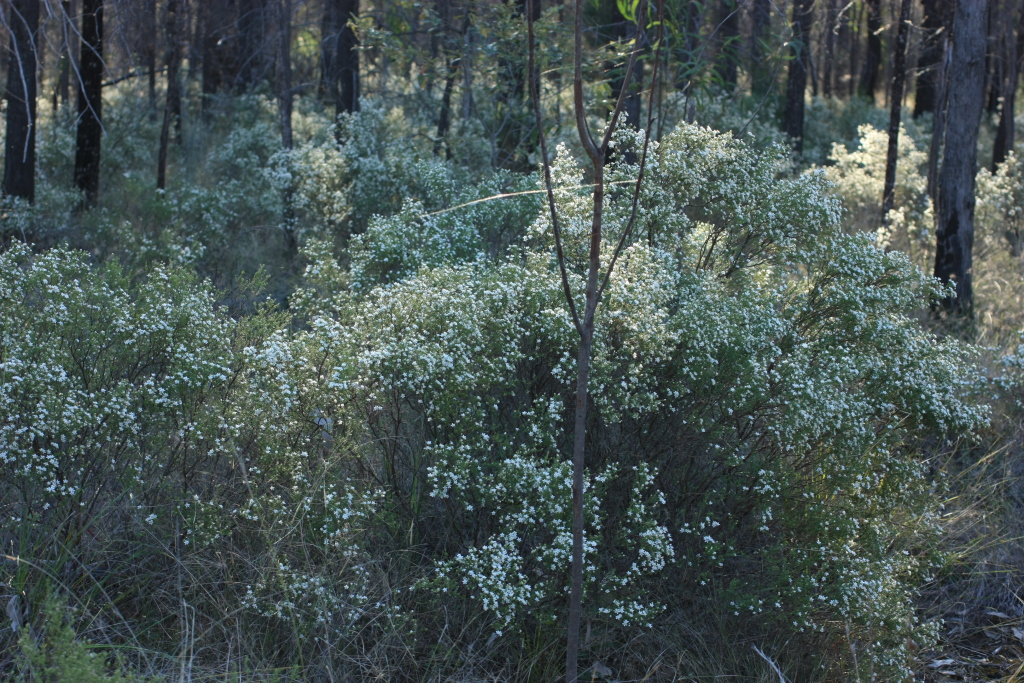Philotheca difformis subsp. difformis
Bushy shrub to about 1 m high. Branchlets with dark, stipule-like excrescences and large oil glands, more or less hairy all over. Leaves fleshy, club-shaped, 3–4 mm long, 1–2 mm wide, apex rounded with a sunken terminal gland, upper surface smooth, lower surface concave with several large glands along the margin. Inflorescences terminal, 1–4-flowered, each pedicel without an obvious peduncle. Flowers 5-merous; sepals deltoid, c. 1 mm long; petals narrow-elliptic, 4–5 mm long, white, hairy inside and out (at least toward the margins), persisting in fruit; anthers not glandular beneath white apiculum; ovary sparsely pilose, carpels free for most of their length. Follicles shortly beaked, c. 5 mm long; seed subreniform, 2.5–4 mm long. Flowers sporadically through the year.
LoM, MuM, Wim, Gold, GGr. Also SA, Qld, NSW. Apparently very rare in Victoria, recorded only from the north-west near Ouyen, the northern Grampians, and Bendigo area. In other States, occurring in sandy or rocky sites supporting mallee and dry woodland communities.
Willis (1973) considered P. difformis widespread within Victoria, including it with the more common P. angustifolia. There are only two contempory collections (from the last 50 years) of this species in Victoria, both from the northern Grampians area. Recent records from the Bendigo region appear to be misdeterminations of P. angustifolia. Along with historic records from Bendio and Ouyen, there are several older collections, labelled ‘Murray River’ which are questionably Victorian. The extent of its distribution in this State requires clarification.
Philotheca difformis can be clearly distinguished from P. angustifolia by the scattered indumentum on young branchlets, the presence of hairs on the outside of petals (at least toward the margins), and the characteristically club-shaped leaves with a sunken terminal gland.
Bayly, M.J. (1999). Eriostemon. In: Walsh, N.G.; Entwisle, T.J., Flora of Victoria Vol. 4, Cornaceae to Asteraceae, pp. 178–183. Inkata Press, Melbourne.
 Spinning
Spinning

